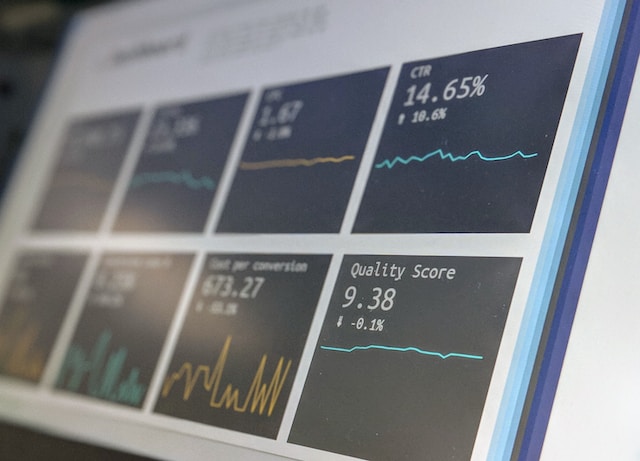
The life sciences industry generates massive amounts of data through research and development, clinical trials, manufacturing operations, and commercial activities. Organizations need to harness the power of this data through analytics to gain valuable insights that can inform better decision-making. Robust data analytics capabilities integrated with project management processes can benefit life sciences companies significantly. Predictive analytics enables accurate planning and forecasting, while real-time analytics allows progress monitoring and rapid response to issues.
This article explores how data analytics enhances various aspects of project management in the life sciences sector, enabling more efficient execution, improved compliance, and faster time-to-market. Let us delve into the vital role played by data analytics in life sciences project management.
Project Planning and Execution
Data analytics strengthens planning and day-to-day execution of projects: Forecasting models help predict project timelines, budget requirements, and resource needs more accurately based on historical data. That improves planning. Analytics provides real-time dashboards on project progress vs. plans, milestone status, and other key performance indicators for rapid issue resolution. Data analytics identifies potential issues and risks well in advance so proactive mitigation strategies can be implemented to avoid delays.
Clinical Trials Management
Analytics offers several benefits in clinical trial management: Analysis of patient demographic data from EMRs and social media helps identify, profile, and reach out to suitable trial participants for faster enrollment. Key trial metrics are continuously tracked and analyzed to enable quick intervention in case of stagnating enrollment, excessive dropouts, or inadequate investigator oversight. Analytics provides insights from past trials that inform the optimization of protocols, inclusion criteria, and trial design to accelerate execution.
Supply Chain Management
Data analytics enables smarter supply chain decisions: By analyzing clinical, sales, and market data, predictive models forecast demand more accurately for better planning and inventory optimization. Analytics provides visibility into inventory levels across locations and highlights fastest-moving products, upcoming shortages, and dead stock for appropriate actions. Data analysis identifies supplier risks, patterns of delays, quality issues, etc., so corrective steps can be taken to improve supplier collaboration.
Regulatory Compliance
Data analytics enhances regulatory processes: Data analysis identifies regulatory gaps, emerging compliance risks based on inspection trends, changing standards, etc., for mitigation. Analytics enables the creation of compliant reports by pulling required data from multiple systems. That minimizes manual efforts and reduces errors. Automated analytics systems can continuously scan regulatory sites and news for upcoming policy changes to support rapid response.
Quality Control and Assurance
Data insights significantly improve quality management: Seamlessly combining analytics with Quality Management Systems like LIMS provides a holistic overview of quality metrics. Analytics enables real-time tracking of deviations, out-of-specification events, yields, quality test results, etc., to drive quicker resolutions. Trend analysis identifies chronic quality issues due to underperforming equipment, operators, materials, etc., to conduct root cause analysis and systemic fixes.
ERP and Business Intelligence
Analytics integrated with ERP and BI systems provides cross-functional insights: Predictive analytics tools and techniques can be combined with BI platforms like Tableau, Qlik, Power BI, etc., for powerful insights. Enterprise-wide analytics leveraging ERP data helps senior management make more informed, data-driven decisions on strategic matters. Integrated analytics across quality, clinical, manufacturing, and supply chain fosters collaboration across silos toward shared data-driven goals. With analytics capabilities maturing rapidly, life sciences project management is poised for transformation into an insights-driven function.
Data Management
Analytics supports data management: Integrated analytics provides a unified view of harmonized, consistent data from disparate source systems like LIMS, ELN, MES, EDC, etc. Analytics systems can be programmed to automatically extract, transform, integrate, and analyze real-time data from instruments, apps, wearables, etc., with minimal manual intervention. Intuitive analytics dashboards visualize key performance metrics across the product lifecycle. Interactive reports deliver insights to users on demand.
Financial Management
Analytics enables smart financial decisions: Systems automatically integrate operational data from the supply chain, production, inventory, etc., for accurate and real-time financial reports. Predictive analytics leverages historical data to forecast budgets identify cost reduction opportunities, and model different financial scenarios. Analysis of customer data identifies payment risks and patterns to optimize collection processes. Supplier data aids strategic payment prioritization.
Human Resource Management
People data analytics provides workforce insights: Consolidated employee information in a data warehouse or analytics platform improves reporting and analysis. HR analytics programs automate processes like applicant tracking, employee onboarding, and performance management for a leaner workflow. Analytics identifies high-performing employee attributes to optimize future candidate selection
Conclusion
The life sciences industry increasingly uses data analytics across the product lifecycle, from discovery to post-market surveillance. Analytics integrated with project management enables optimized planning, real-time tracking, and early risk detection. It is a key enabler for improving efficiency, reducing costs, and driving faster time-to-market for biopharma firms.
With analytics capabilities maturing rapidly, life sciences project management is poised for transformation into an insights-driven world.

